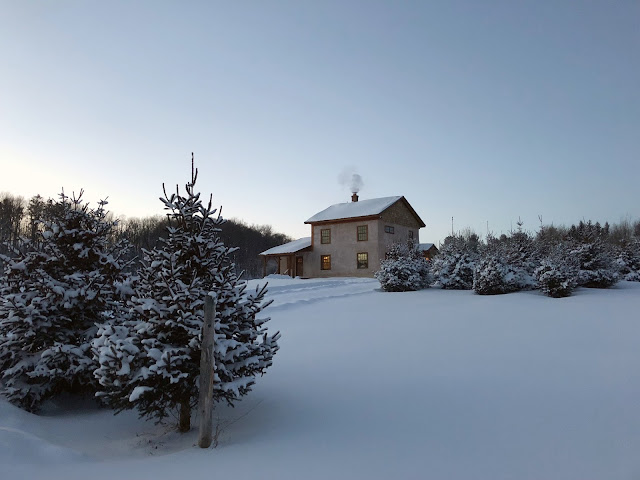 |
| Our super fancy plywood countertops that didn't even go all the way around. |
Living with plywood countertops for almost two years is not ideal, but it’s one of those things that you stop paying attention to when you move into a house. You inevitably find it convenient that you don’t actually have to open the cabinet that stores the garbage can; you can just drop in your trash from above because you ran out of plywood scraps so there’s nothing covering that cabinet and it’s open on the top. After awhile, though, you start to notice that plywood is really difficult to clean and it’s starting to get gross, so you look at the calendar, see that Labor Day is fast approaching, and decide you’re finally up for pouring some concrete.
It’s tricky business, pouring concrete. The prep work takes twice as long as you think, the pouring and mixing take some tweaking to get just right, the curing process is slow, and the finishing is even slower. All told, we were kitchenless for about two weeks. (And then I was scared to put anything on them for another few weeks.)
 |
| Cement board goes down on top of the cabinets before installing the forms. Also, I spy a dog butt. |
 |
| All the forms and mesh installed and ready to go. Beer cans for extra weight while the caulk cured. |
It took us a lot longer to prep everything than I anticipated, which was fine because we had an extra day to pour the concrete because of Labor Day. I purposefully started prepping early because I figured it would take forever to get everything set up and it did. As with everything DIY, we just rolled with the punches and willingly accepted the delay rather than rush and make sloppy mistakes.
 |
| In the midst of pouring the concrete. |
We used these forms from Concrete Countertop Solutions and they worked out quite well. You screw them right to the cement board, pour directly into them, and once the concrete has cured, the forms snap right off, leaving a nice finished edge. The concrete mix we used is just regular old portland cement, sand, and gravel from Home Depot. Nothing fancy, especially because we planned to stain them after the fact. We were pleasantly surprised to find, though, that the portland cement slurry we used to fill little pinholes was much darker than the finished concrete so we skimmed the whole surface and once they were sealed, they were the perfect color. Dark, but not too dark. Just enough to hide any stains.
 |
| Poured and troweled. |
 |
| The last little section. |
 |
| After the forms came off. All those little holes got filled. |
My best advice for installing concrete countertops is to watch as many videos as you can and read as much as you can because even when you think you know what you’re doing, you could probably learn a little more. Be patient, but not too patient because you are, after all, working with something that’s starting to cure as soon as you add water. It’s also worth understanding your limitations because chances are, you are a novice, so go easy on yourself if things don’t turn out exactly as you’d hoped. If you’re interested in step-by-step instructions, we kind of combined techniques from the form manufacturer and another concrete countertop installer who posts on YouTube. Both were great resources in learning what to do.
 |
After everything was filled, sanded, and sealed.
|
 |
| Finally done! (Well, except for hardware and backsplash.) |
All in all, we’re really happy with the way that they turned out. After a light sanding, we sealed them with a few coats of tung oil that soaked into the concrete and gave everything a nice matte finish. Are they perfect? No. Will they need another coat of oil this year? Probably. Will they get stained and etched over time? Definitely. But for something that we kept putting off for one reason or another, they look amazing.











It is a proficient article that you have shared here about Kitchen Countertop Wilmington I got some unique and valuable information from your article. Thankful to you for sharing this article here.
ReplyDeleteI generally check this kind of article and I found your article which is related to my interest. Genuinely, it is good and instructive information about quartz countertops Idaho Falls, IDThanks for sharing an amazing article here.
ReplyDeleteIt is a proficient article that you have shared here about Best Countertops Morehead City I got some unique and valuable information from your article. Thankful to you for sharing this article here.
ReplyDelete